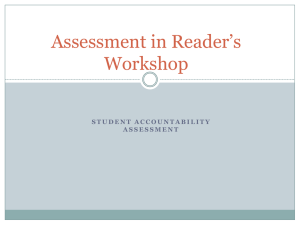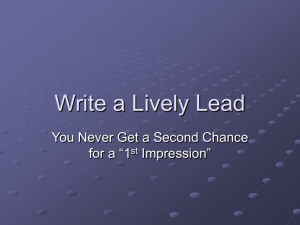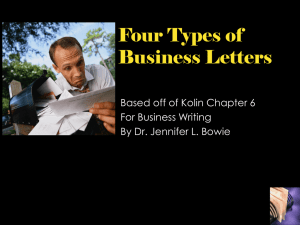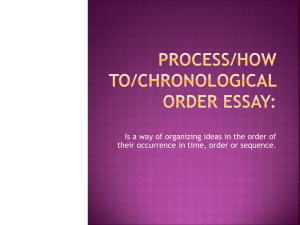Suggested TOFU white paper outline
advertisement
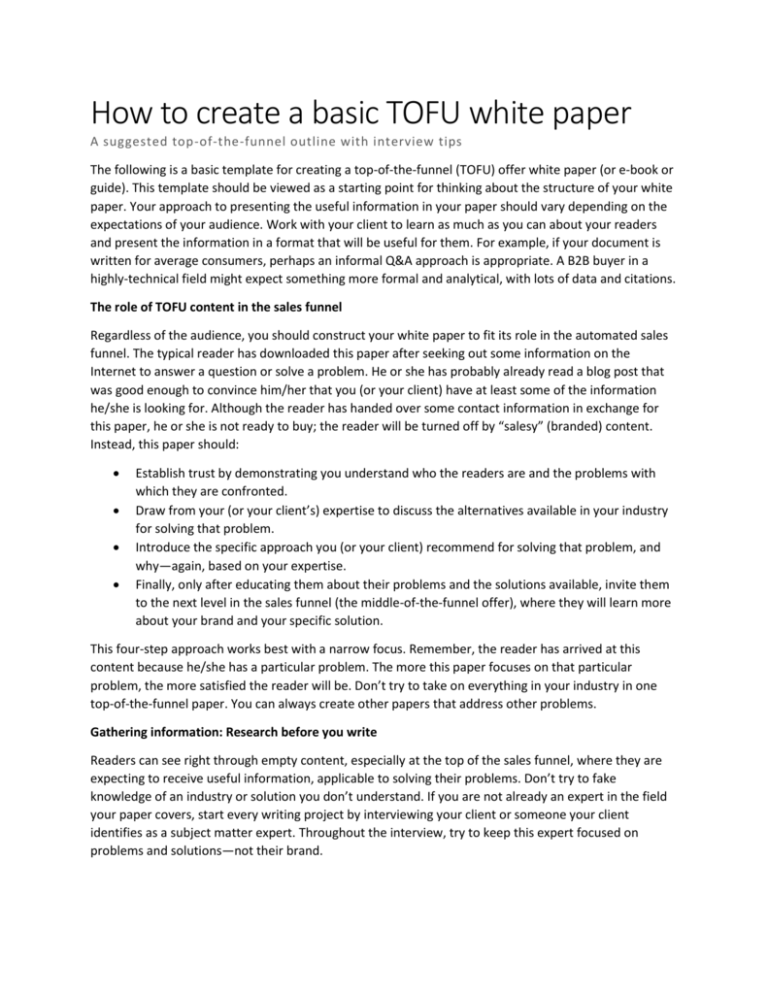
How to create a basic TOFU white paper A suggested top-of-the-funnel outline with interview tips The following is a basic template for creating a top-of-the-funnel (TOFU) offer white paper (or e-book or guide). This template should be viewed as a starting point for thinking about the structure of your white paper. Your approach to presenting the useful information in your paper should vary depending on the expectations of your audience. Work with your client to learn as much as you can about your readers and present the information in a format that will be useful for them. For example, if your document is written for average consumers, perhaps an informal Q&A approach is appropriate. A B2B buyer in a highly-technical field might expect something more formal and analytical, with lots of data and citations. The role of TOFU content in the sales funnel Regardless of the audience, you should construct your white paper to fit its role in the automated sales funnel. The typical reader has downloaded this paper after seeking out some information on the Internet to answer a question or solve a problem. He or she has probably already read a blog post that was good enough to convince him/her that you (or your client) have at least some of the information he/she is looking for. Although the reader has handed over some contact information in exchange for this paper, he or she is not ready to buy; the reader will be turned off by “salesy” (branded) content. Instead, this paper should: Establish trust by demonstrating you understand who the readers are and the problems with which they are confronted. Draw from your (or your client’s) expertise to discuss the alternatives available in your industry for solving that problem. Introduce the specific approach you (or your client) recommend for solving that problem, and why—again, based on your expertise. Finally, only after educating them about their problems and the solutions available, invite them to the next level in the sales funnel (the middle-of-the-funnel offer), where they will learn more about your brand and your specific solution. This four-step approach works best with a narrow focus. Remember, the reader has arrived at this content because he/she has a particular problem. The more this paper focuses on that particular problem, the more satisfied the reader will be. Don’t try to take on everything in your industry in one top-of-the-funnel paper. You can always create other papers that address other problems. Gathering information: Research before you write Readers can see right through empty content, especially at the top of the sales funnel, where they are expecting to receive useful information, applicable to solving their problems. Don’t try to fake knowledge of an industry or solution you don’t understand. If you are not already an expert in the field your paper covers, start every writing project by interviewing your client or someone your client identifies as a subject matter expert. Throughout the interview, try to keep this expert focused on problems and solutions—not their brand. The following suggested outline can function as guide for an interview with a subject matter expert, as well as for structuring and writing your TOFU paper. The answers to each question should provide content for each section of the paper. Suggested TOFU white paper outline 1. Establish trust by demonstrating you understand the reader and his/her problems a. Who might be reading this paper? What characteristics do all the readers have in common (industry, position, geographic location, etc.)? b. What problems are the readers experiencing that would lead them to seek out the information in this paper? c. What (if anything) are they currently doing to solve that problem? Why has that approach been unsatisfactory? d. What are the risks of not solving this problem/continuing to use an unsatisfactory solution? 2. Drawing from your experience and expertise, discuss the alternatives available in your industry for solving the reader’s problem a. Is there anything the reader can do on his/her own to solve his/her problem? (Without investing in a professional solution.) b. Are there any drawbacks to this do-it-yourself approach? What are they? c. What professional solutions (other than your own) are available for solving the readers’ problem? d. What are the benefits of each one? What are the drawbacks? What do industry experts have to say about each one? 3. Introduce the specific approach you recommend for solving that problem, and why a. How would you summarize your recommended solution? How does it work? b. Why is the solution you recommend better than a do-it-yourself solution or other alternatives? c. What are some reasons readers might be skeptical about your solution and how would you respond to that? d. How should a reader differentiate between the different businesses that provide this solution (if there is more than one)? 4. Introduce the next step (down-funnel offer) a. Briefly (very briefly), how does your business provide the recommended solution you discussed in the previous section? b. What can the readers do to learn more about how your business will solve their problems? (This is where you put a call to action to download a middle-of-the-funnel Brand Filter Offer.)


